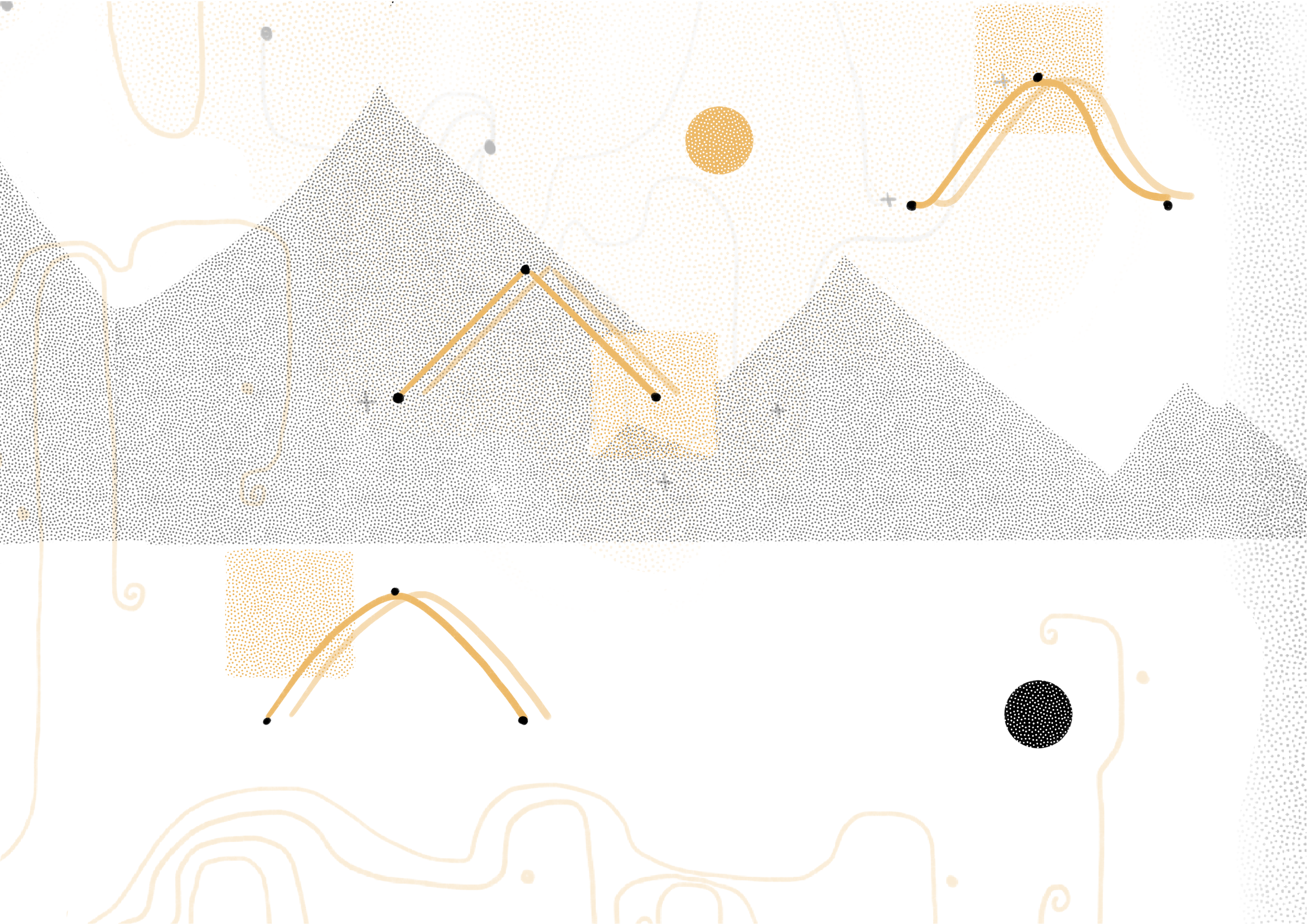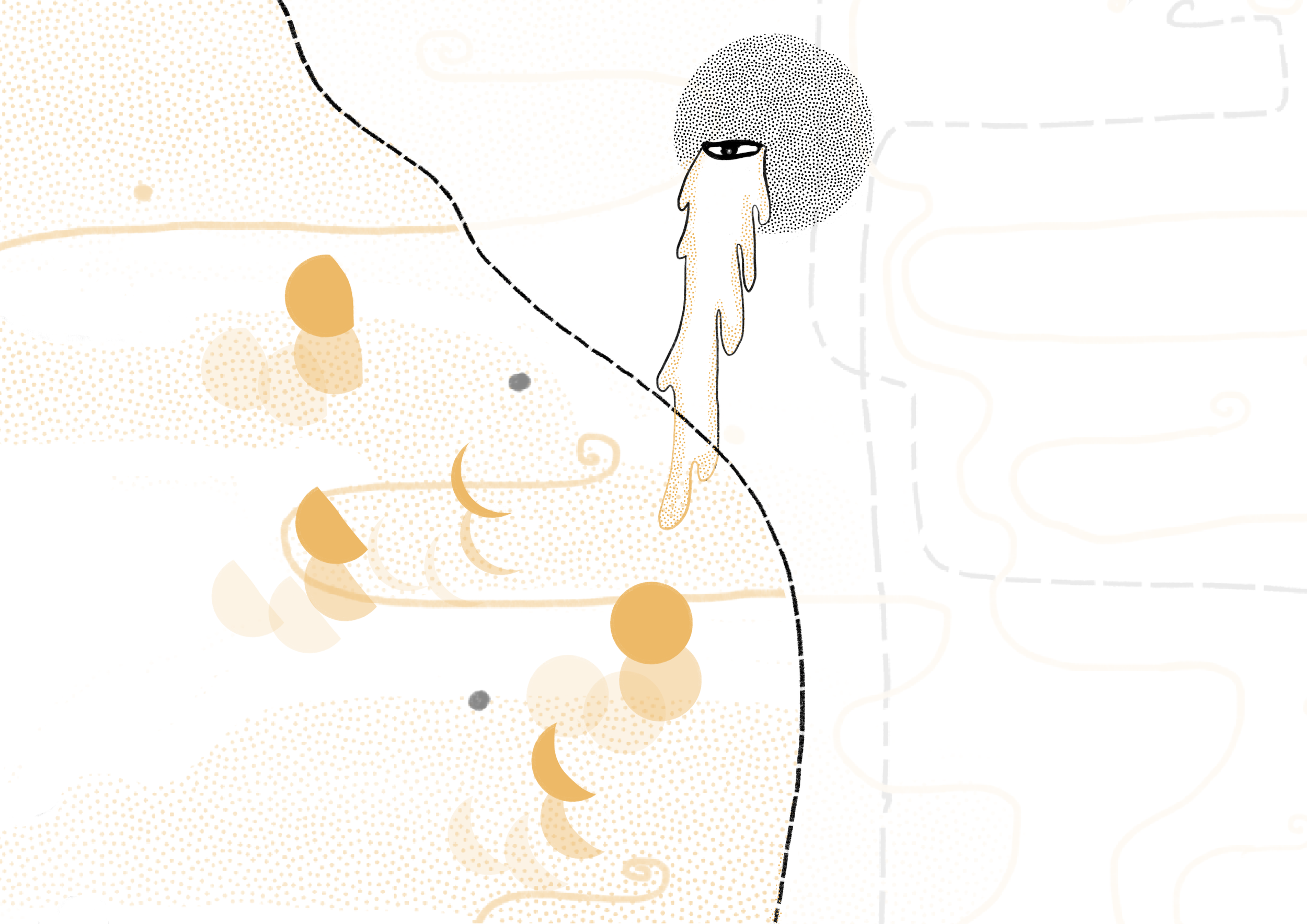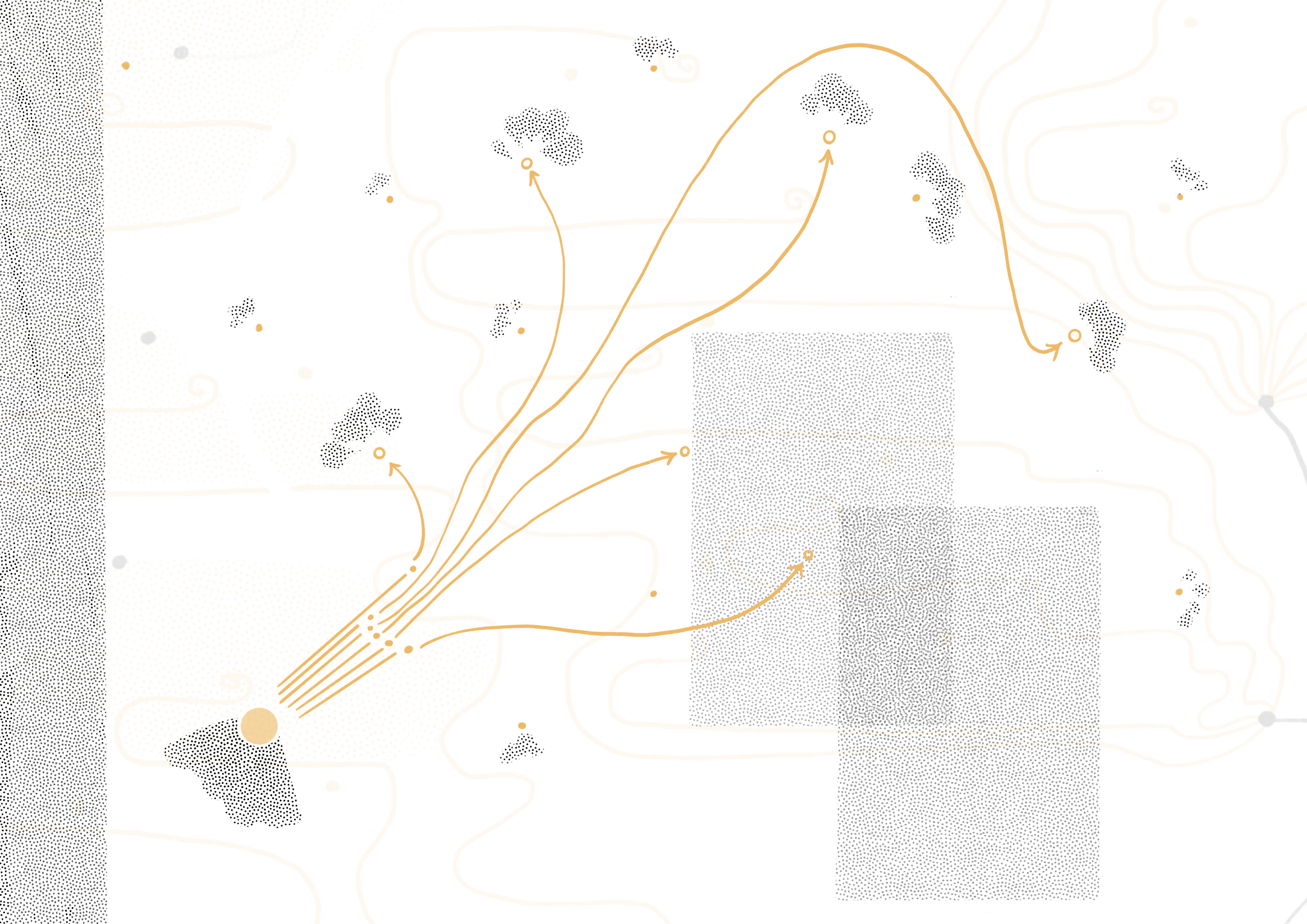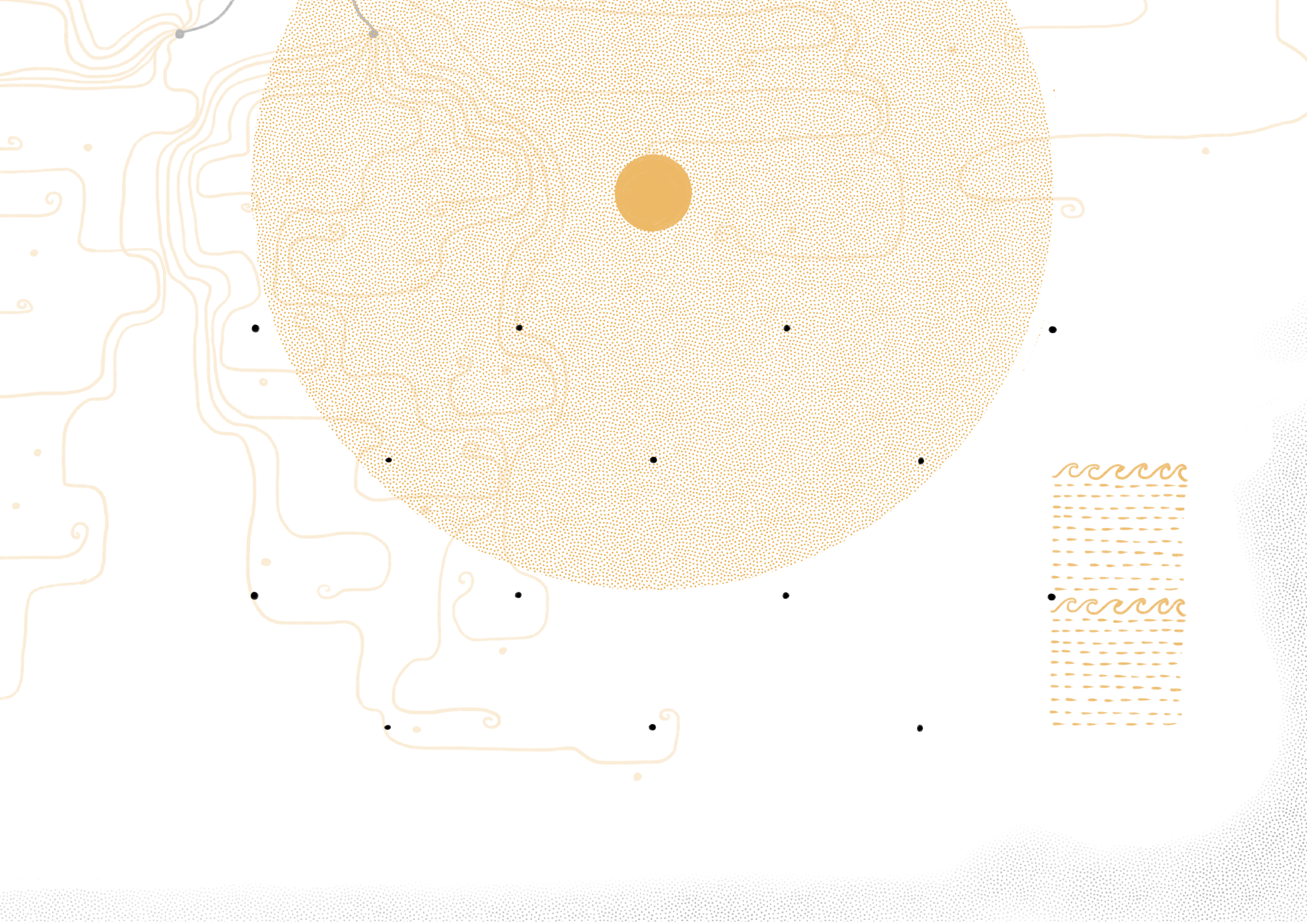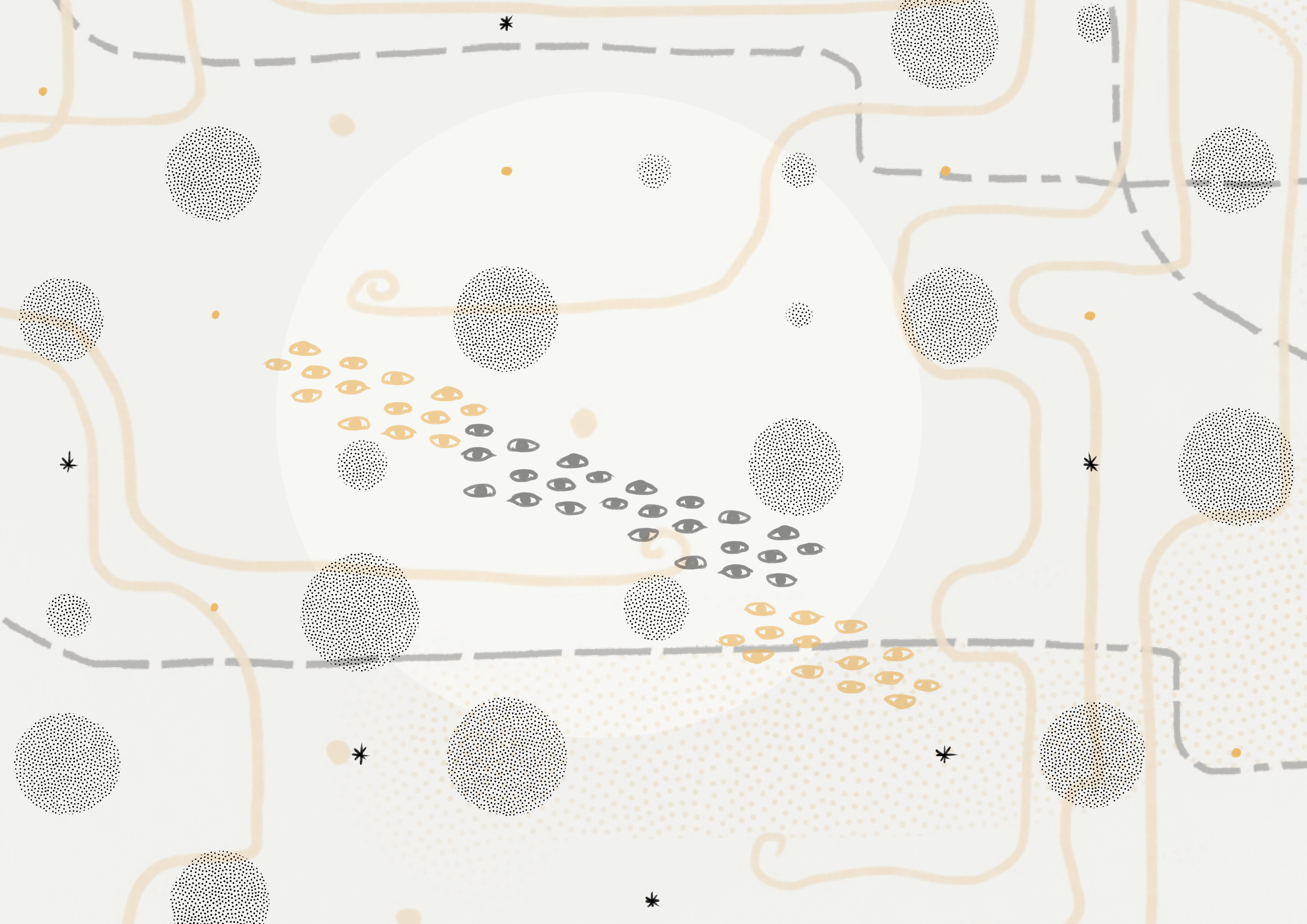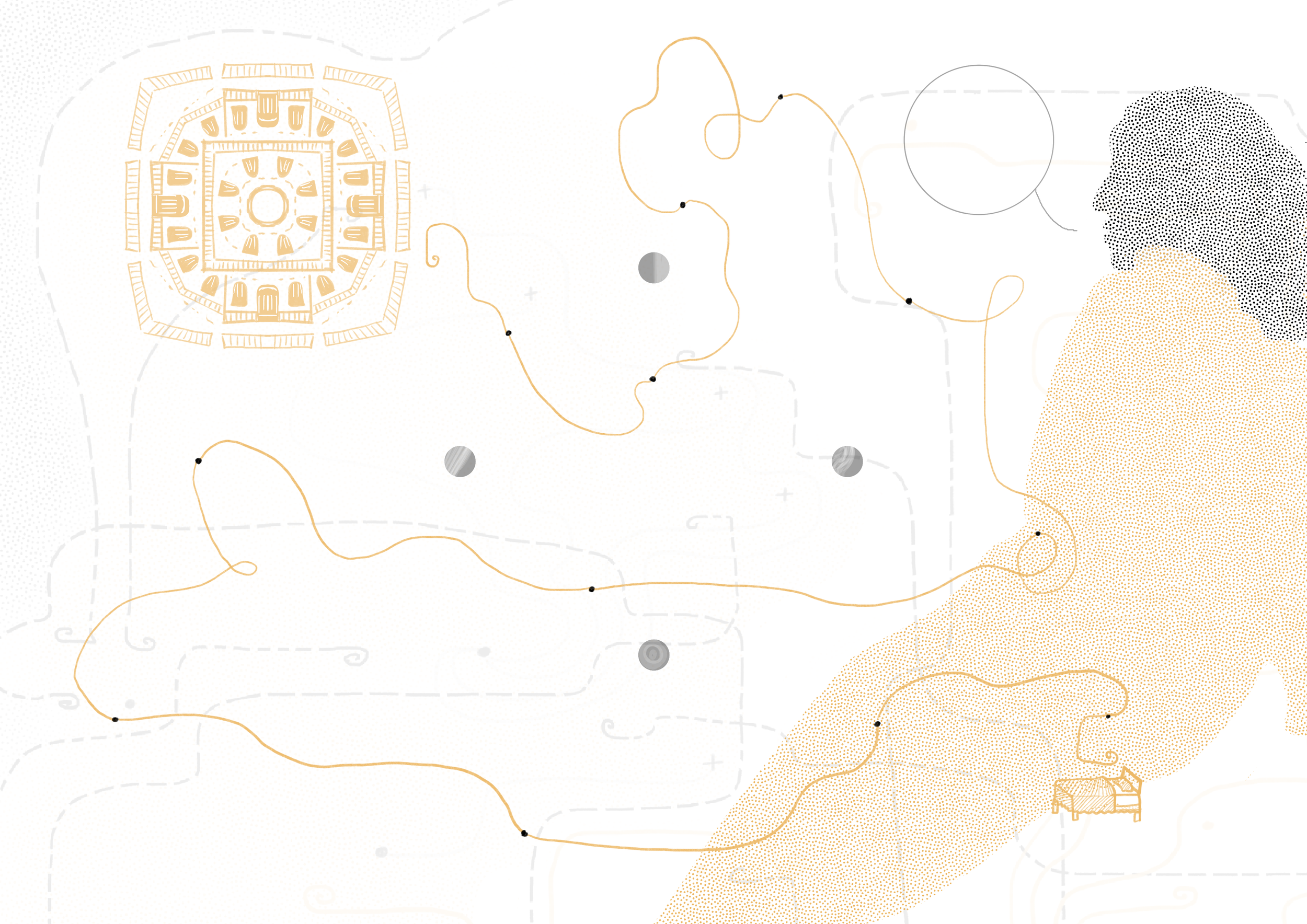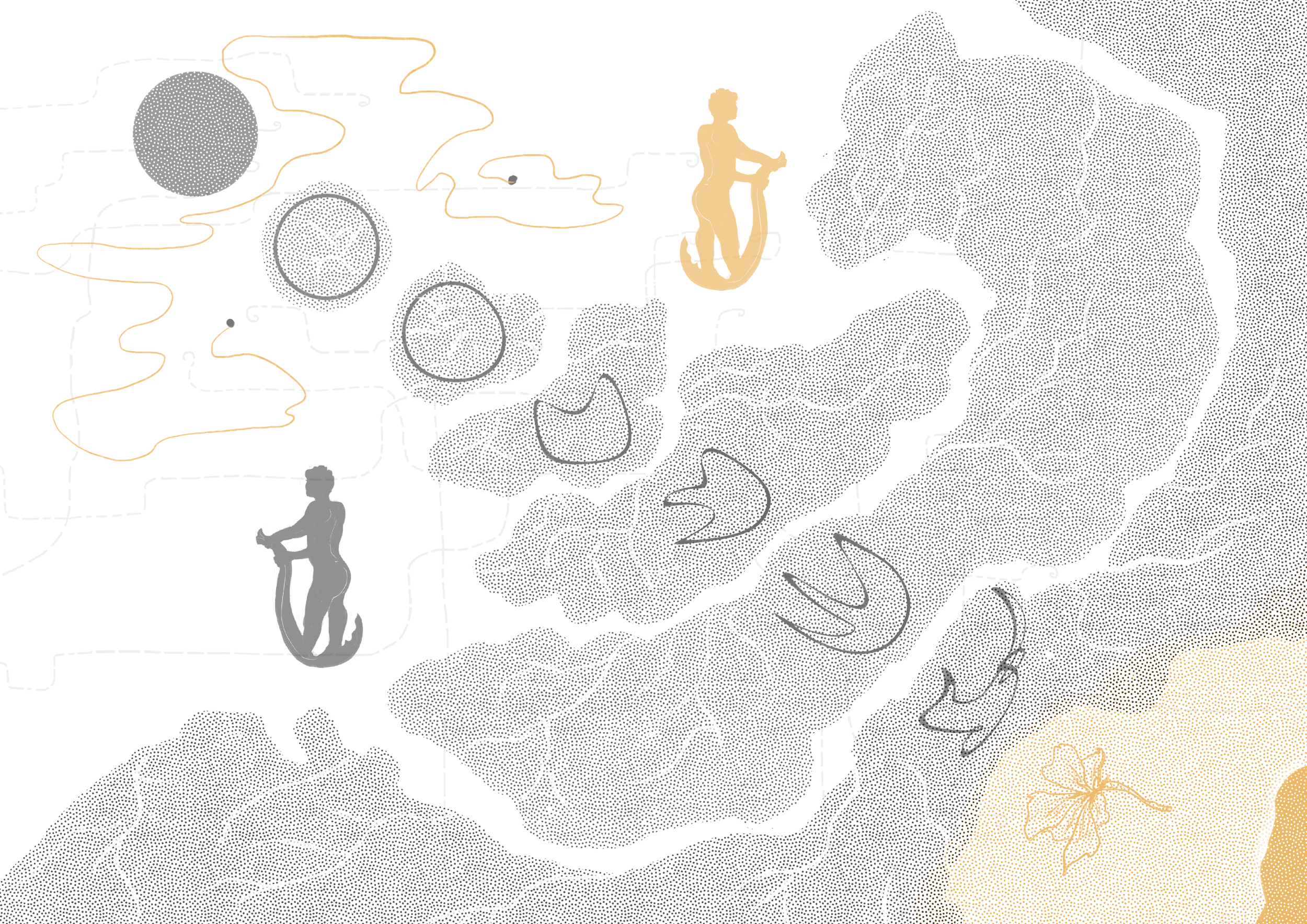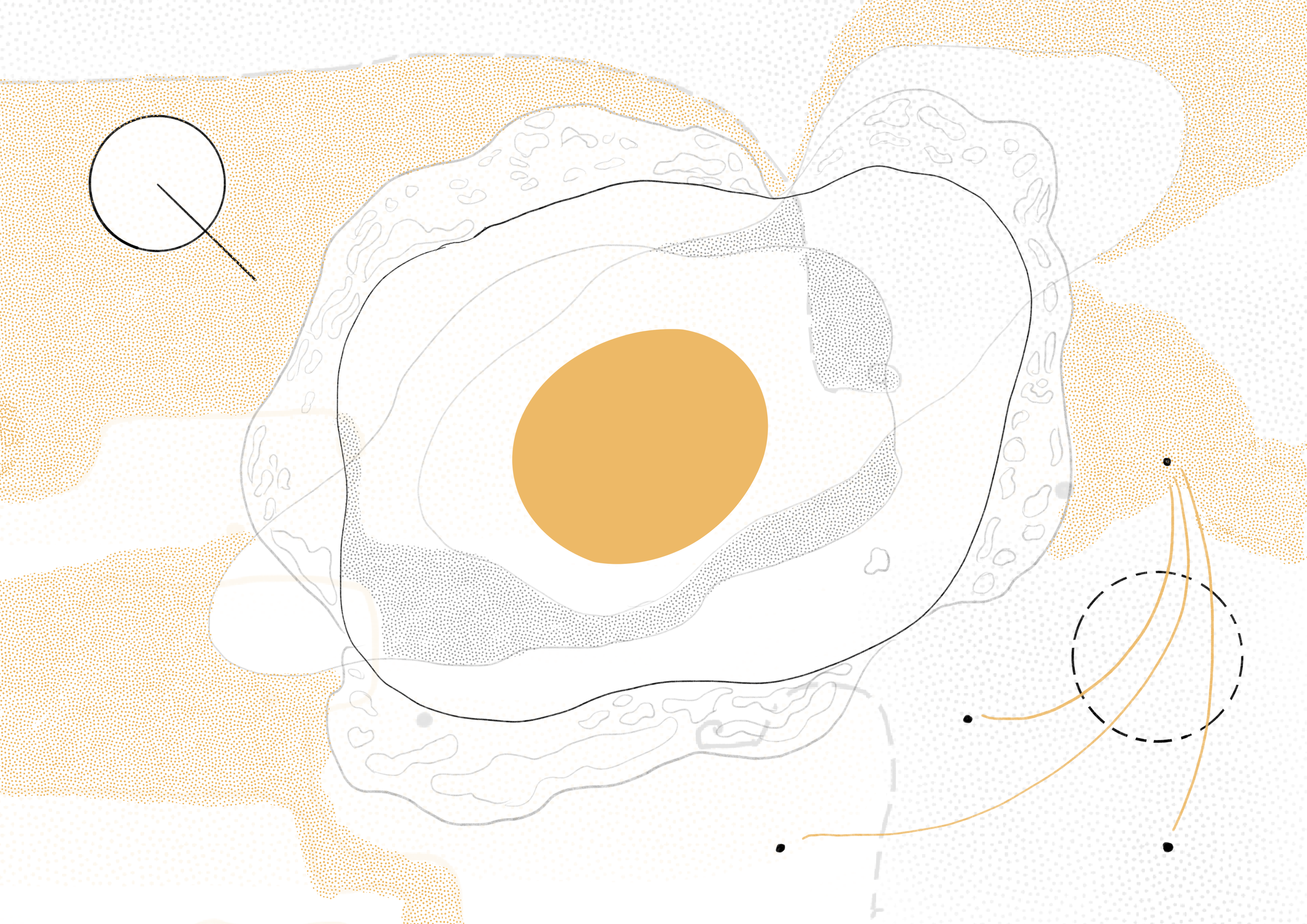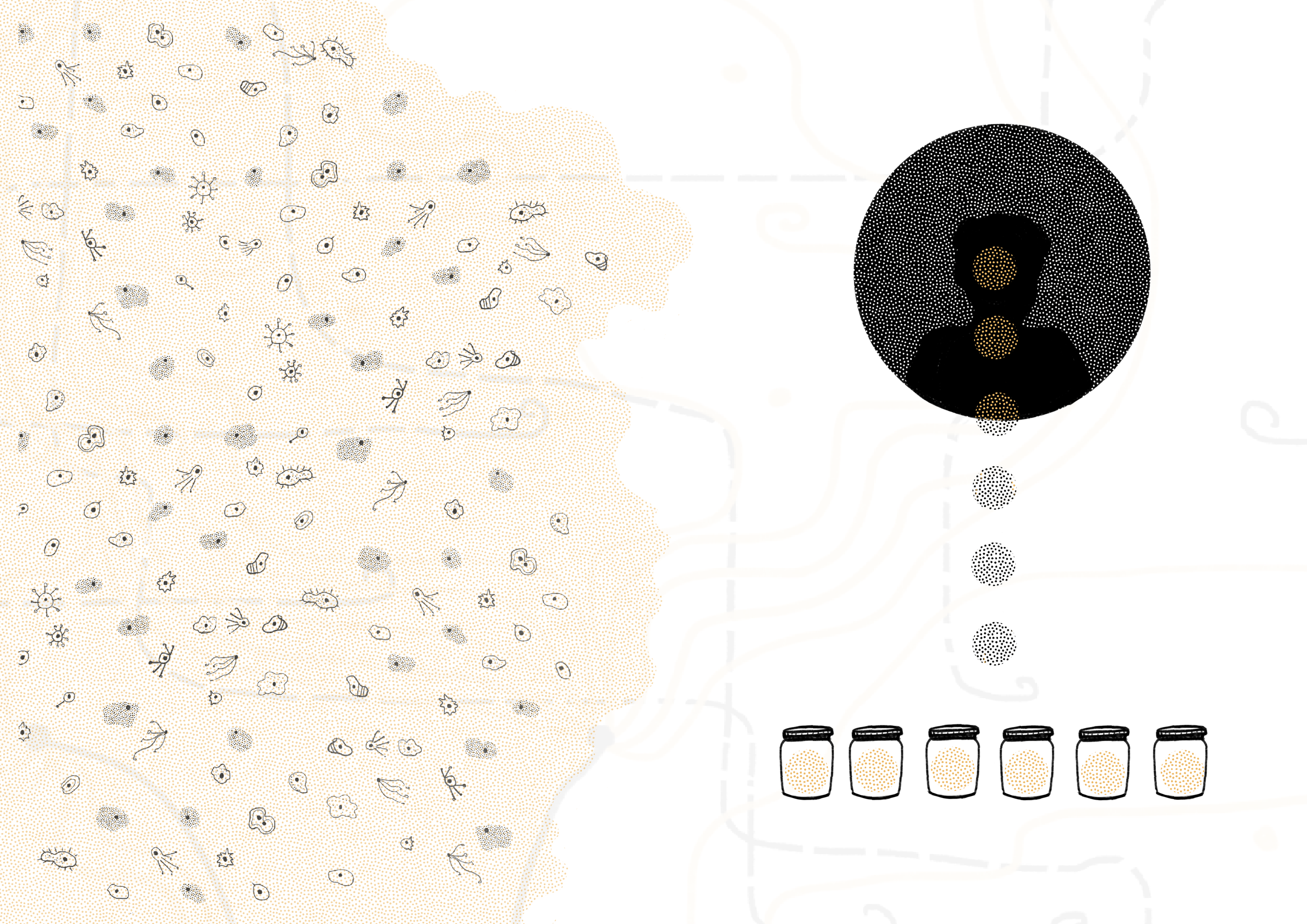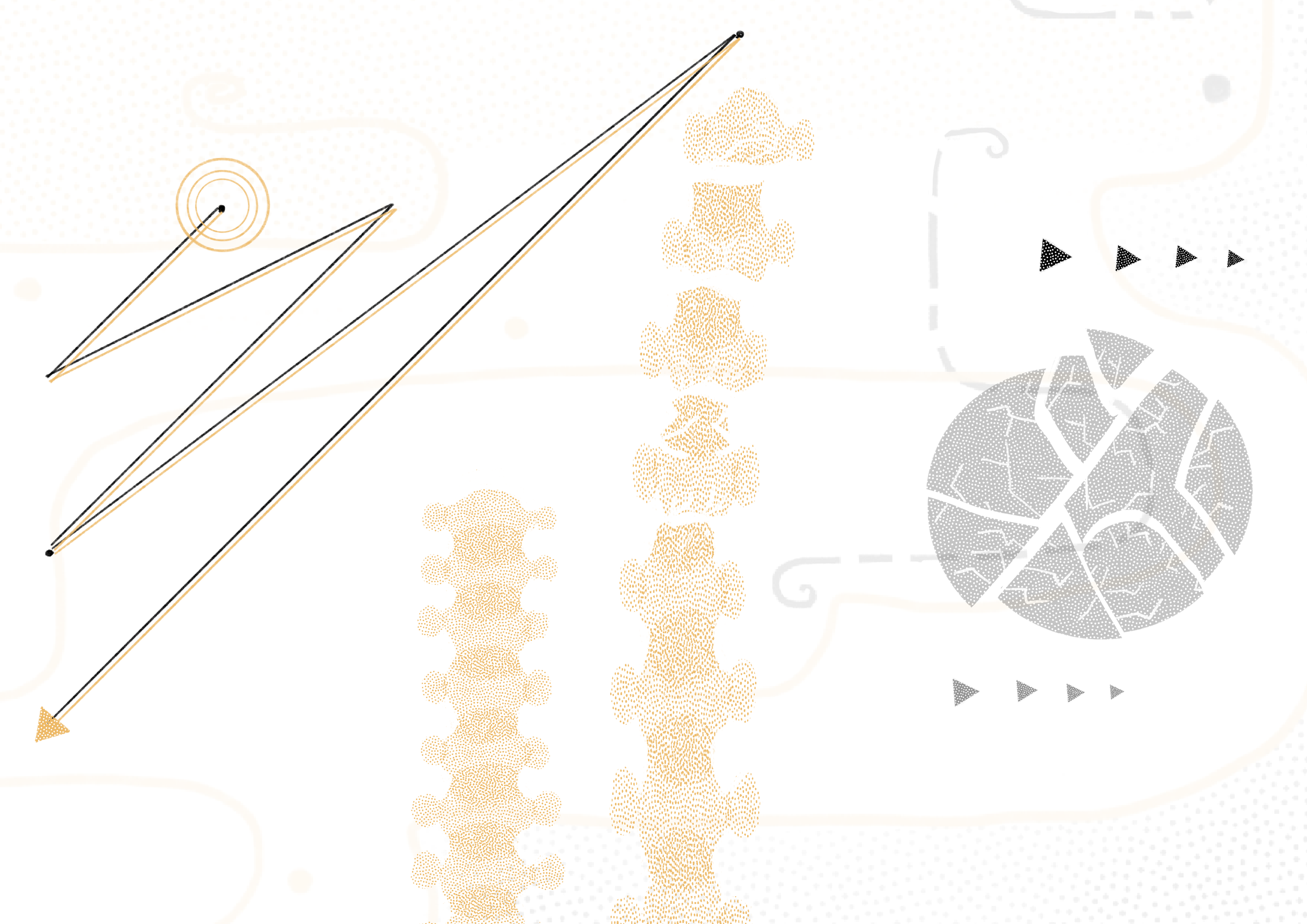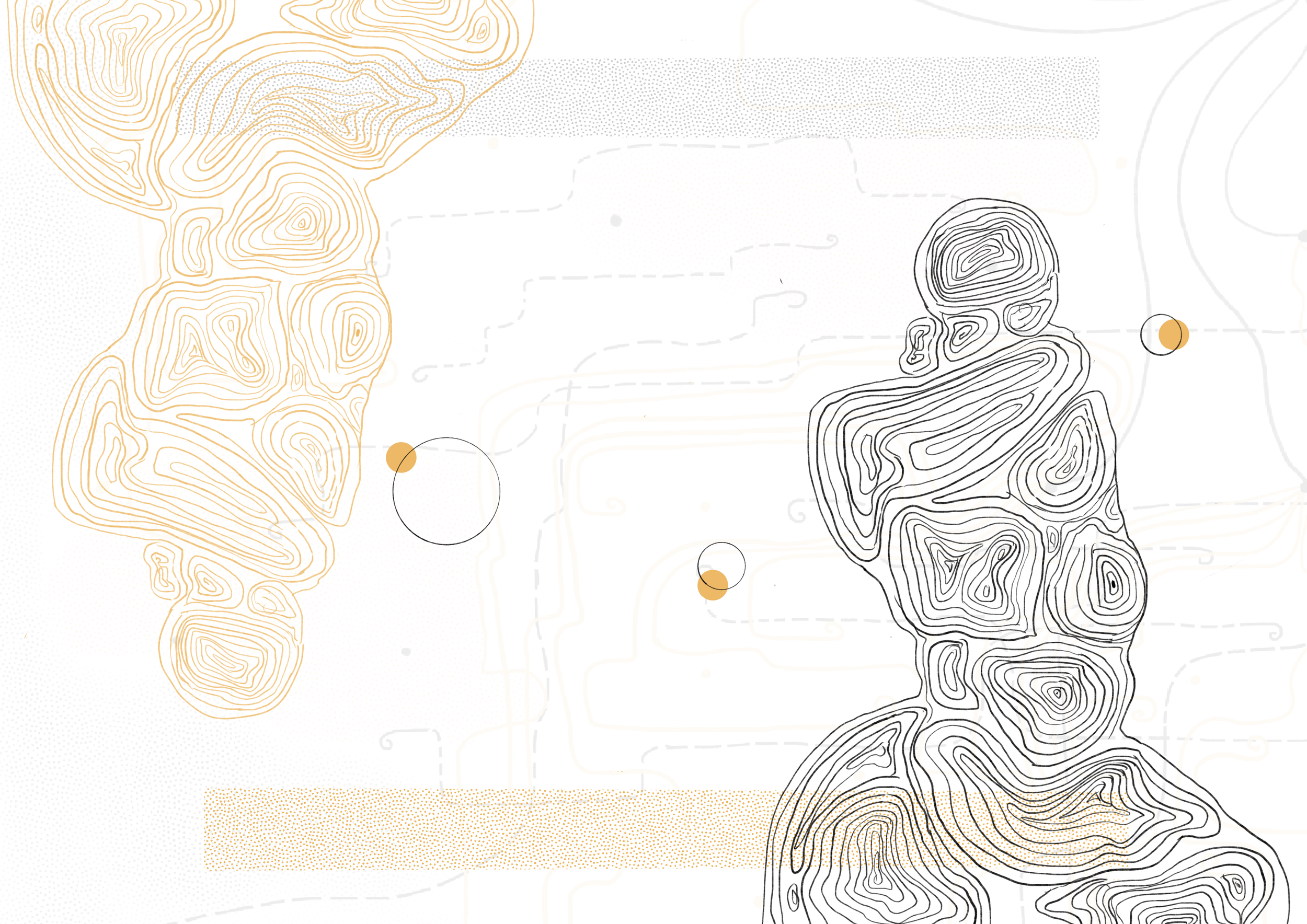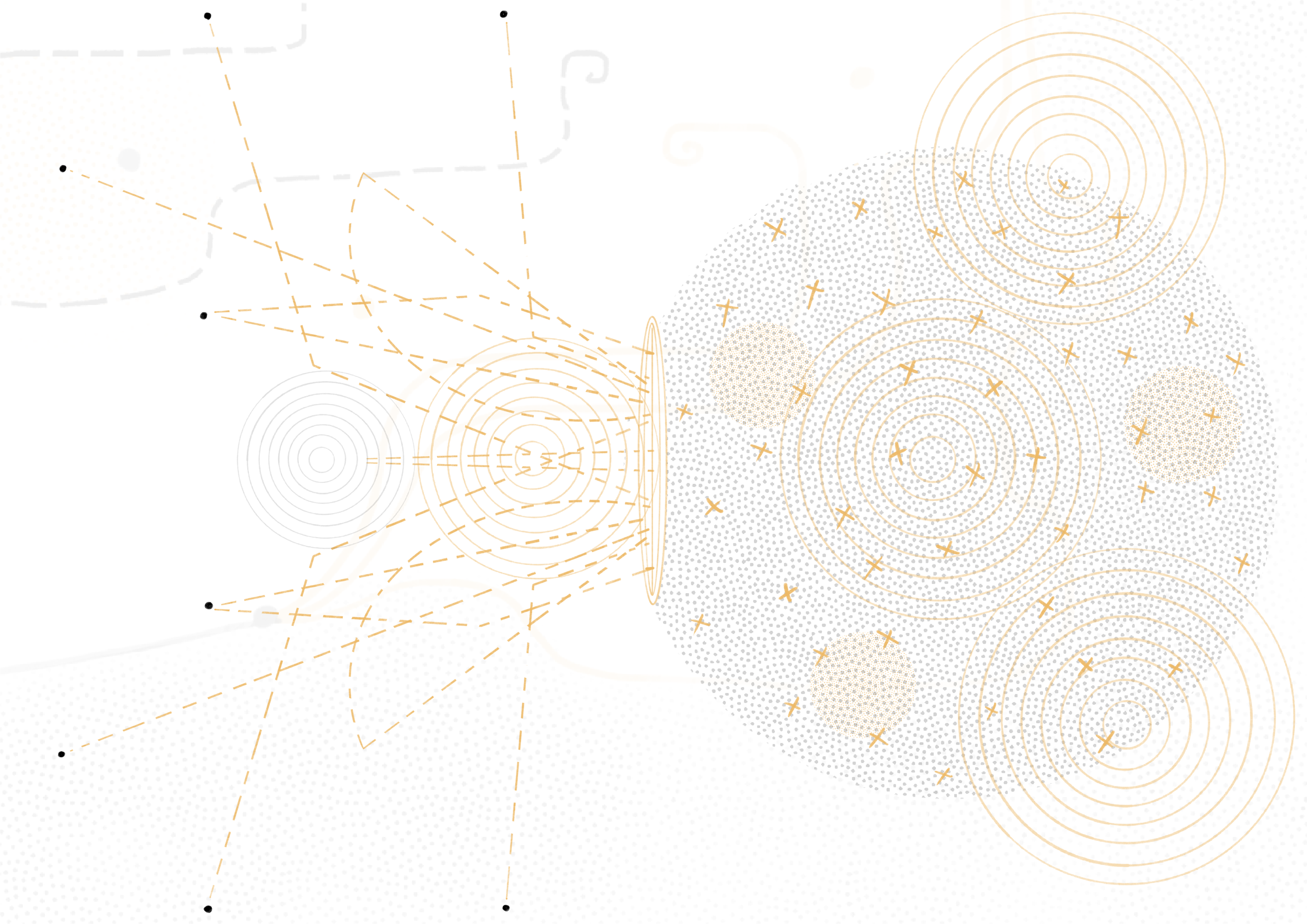FIGURE OF DESIRE/WHIPPERSNAPPER
VIDUR SETHI
I am the whippersnapper, my garb—a mothership—is woven of macrophages by quiet investigative provocateurs. These agents making raw turns while ascending down any staircase catch vortexes of all behaviours deviant even to the most deviant norms. They occupy times inside the shining orbs which seek to care for all the existence of any nontaxonomy at the centre of ER=EPR. From earth, when I am there, the orbs appear like glowing worms mating in a night sky which is as dark as any desire that strives for a transparent flag. But the moment I realise that the designers of what would make my flesh are not distant to me but continuously activating cells of plural desires in my clothing, the separation between us is filled with much lesser gap.
I land in my mothership often at spaces of conflict where adults are so threatened by children that they invent an Institution of Childhood to kill Child Soldiers. Adult soldiers however, are allowed to exist and it seems so strange to me that I feel that even though many over here, on this earth, feel free, what they are actually trying to say is that they feel alone. After all, what do children make a case for other than letting those emotions and ambitions which are termed as degenerate live a longer life. With my long and plump body, a scrunched-up head that looks like a gas mask to many, I move slowly through the joints that hold these two walls which translates more children to grow up as adults in this world. A cosmos inside a microcosm where a language of communication--in which I write to you as you look at a black mirror lighting your senses, or a white paper which you can touch and feel—is many a times to live traditions which master in the act of getting lost in what entails the human.
So, all I desire for is a diagnosis of exclusion.
I do that by snapping my whips which might seem diminutive, insignificant, presumptuous at first but in its arrogance and irreverence towards all things ordered, it vandalises and searches for the before of an after, the after of a before. In this necromantic process of quietly entering inside the bodies of tables and books and speakers and trees and eyelids and veins and soil and airplanes and pencils and rockets and many such things, I love metamorphosing into tardigrades and step in slowly to desire for deviance and construct a chrestomathy of dissent, an architecture of care where I grow up as a child while I descend down some stairs.
In being the whippersnapper, I liberate; In being liberate, I feel alone; In being alone, I think of what to do with my liberation; In that and this, I deviate.
Would you like to deviate with me?
